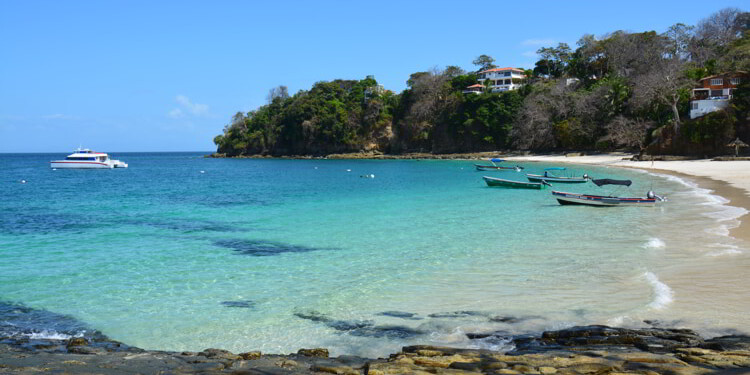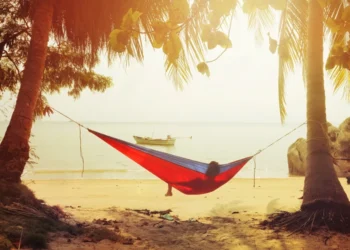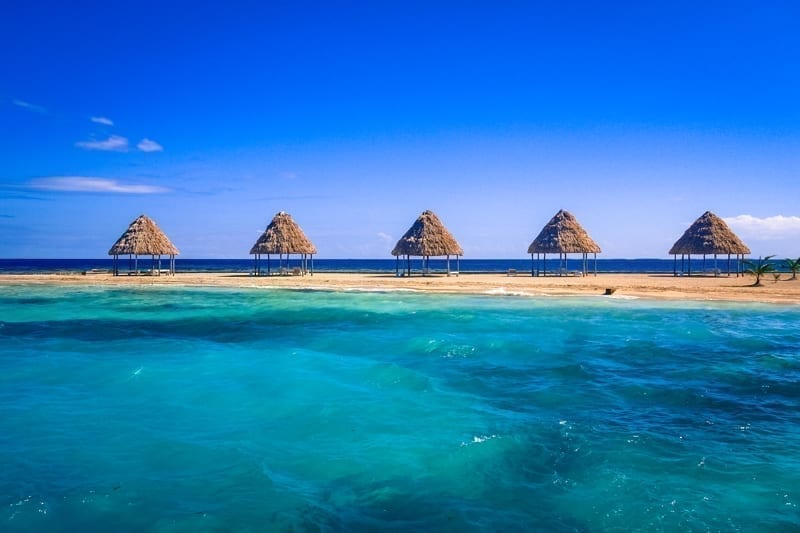Las Perlas offers an island lifestyle reminiscent of the Virgin Islands back in the 70s…
This string of islands has the best beaches and fishing, plus consistently perfect weather, within easy reach of Panama City. But each island in this 200-plus-island archipelago has a different culture, and none will remind you of a typical vacation destination… that’s how you know you’re someplace special.
Las Perlas has retained the wild allure of the sea that, for over 400 years, has been plied by islanders navigating canoes and now panga boats—small, traditional fishing boats.
The backdrop of the island boats mixing with the visiting yachts provides a rich tapestry connecting the past with the future; pangas weave through time as they do the archipelago’s many islands.
Get Your Free Panama Report Today!
Simply enter your email address below and we'll send you our FREE REPORT - Live And Invest In Panama: The #1 Retirement Haven In The Americas.
Many of these islands are uninhabited and noted for their natural beauty and marine resources. They’re steeped in history, with the pearl industry in the days of pirates and conquistadors starting around the 1600s.
In the 1960s, Gabriel Lewis Galindo, a Panamanian diplomat and businessman, was stranded on one of these islands, Contadora, while on a fishing trip. He returned in 1968 to buy 110 hectares of land from the Government of Panama in order to build a family home and develop the island’s tourism potential.
Tourism bloomed on the island, and in the 70s and 80s, Contadora became synonymous with the lifestyle of the rich and famous. For decades the now-defunct Contadora Resort and Casino was an icon of tropical luxury. It had peacocks, deer, and over 350 rooms, attracted Hollywood celebrities and was regarded as the most famous five-star island resort in Latin America.
Despite its modern fame, the 1600s buccaneering allure of the islands continues to this day. Many sailors and adventures who happen across the archipelago decide to stake out a home base here…
Each island in Las Perlas has a distinctly different look and feel. The most popular islands developed for tourism and attractive to expats looking for island property are Isla Contadora, Isla Saboga, and Isla Viveros. They are accessible by ferries, by Air Panama to the regional airport on Contadora, and by private boat.
Panga boats and the pangeros who sail them are still the heart of inter-island transportation on the islands today. They transport people and goods to shore from yachts and commercial boats, ferry workers to their jobs on neighboring islands, and hire themselves out to tourists as water taxis and fishing guides.
As a resident of Isla Saboga for a year and a half, and more recently on Isla Contadora for several years, what keeps me here full-time is the marine lifestyle, the magnificent greenery, the beaches, and everything about nature.
It’s the perfect combination for me: the ability to live a productive life surrounded by nature—no noise, no traffic, no pollution—and I can work remotely and travel as much and as often as I want.
The reasons U.S. expats John and Nancy settled on Isla Contadora in 2006 were, “Number one: There are no hurricanes and, of course, oceanfront… Where in the world can you find oceanfront at a reasonable price where there aren’t any hurricanes? I didn’t want to worry about having to rebuild the house a second time,” says John.
Contadora has an international flavor. “You can run into and rub shoulders with people from all over the world in a nice recreational format where people like to have conversations. I find that really cool,” John says. “And it is a natural gated community because you can only get here by airplane or by boat.”
Crime is very low on the islands, but people are people everywhere, and you invite trespassers if you leave houses unattended for long periods of time. You certainly feel safe walking around alone all hours of the day and night. The roads are good on the island, and most roads are lit at night.
“There is fairly reliable trash pickup on the road and beaches thanks to the homeowners’ association ARPUIC,” says expat homeowner John.
Get Your Free Panama Report Today!
Simply enter your email address below and we'll send you our FREE REPORT - Live And Invest In Panama: The #1 Retirement Haven In The Americas.
Another reason John moved here is that Contadora has a regional commercial airport and a federal medical clinic. Antibiotics you might pay $100 for in Panama City, here you get for free.
It’s important to note that the medical clinic is not a trauma center. They can patch you up until you can get to Panama City to the hospital, but you will have to make the journey to the capital for serious injuries or health concerns. For the everyday things (the flu, allergic reactions, accidents, etc.), they can help.
Las Perlas has an impressive list of attributes that make it an ideal retirement destination… and I haven’t even touched on its recreational opportunities. These islands and their surrounding waters are home to mind-boggling biodiversity. Rare sea birds like the blue-footed booby nest here, and thousands of humpback whales migrate each year from Antarctica to Las Perlas to give birth and to mate.
The cost of living on any island is driven up by the logistics and expense of getting the products and services to the island. The cost of manpower to unload groceries off barges, transport goods, and stock shelves adds to the cost of the items sold.
In general, if something costs $1 in Panama City, it will cost $1.50 on the islands. Fresh fruit and vegetables are found on the days the barge lands. Of course, you can get a whopping deal on fresh fish and shrimp if you buy from the local fishermen; approximately $5 to $6 per pound. Or better yet, catch dinner yourself.
Contadora has a couple of very small grocery stores with limited and mostly small quantities of goods. On other islands, you might be standing on the street buying goods through a window opening of a house that stocks a few items for sale.
One full-time homeowner here reports the overall cost of living is typically $1,250 a month, not including mortgage payments or property taxes. Another expat who resides here only seasonally reports his monthly budget is $1,500, again not including mortgage payments or property taxes.
Homeowners’ fees vary from $800 for inland property to $1,200 for waterfront annually.
Although a budget for renting a house can be estimated at $2,000 a month, there are no long-term rentals on the island, as any space not occupied by owners or property caretakers are rented short-term to tourists.
Water and electricity are expensive. Electricity on Contadora and Saboga is provided by a diesel generating facility on Saboga. Islanders rely largely on water catchment during the rainy season—April through November.
A lake on Contadora serves as a community water source, but it dries up in the dry season, and then the solution is for water to be barged to the island from Panama.
It is the most expensive water in Panama, though a planned infrastructure upgrade will provide delivery of potable water and a wastewater treatment solution.
“Contadora is good for living and investing because it’s quiet, the value of the investments hasn’t ever gone down, that I know of,” says homeowner John. “I don’t think people have ever lost money.”
Sincerely,
Ilene Little
Contributor, Panama Letter

















